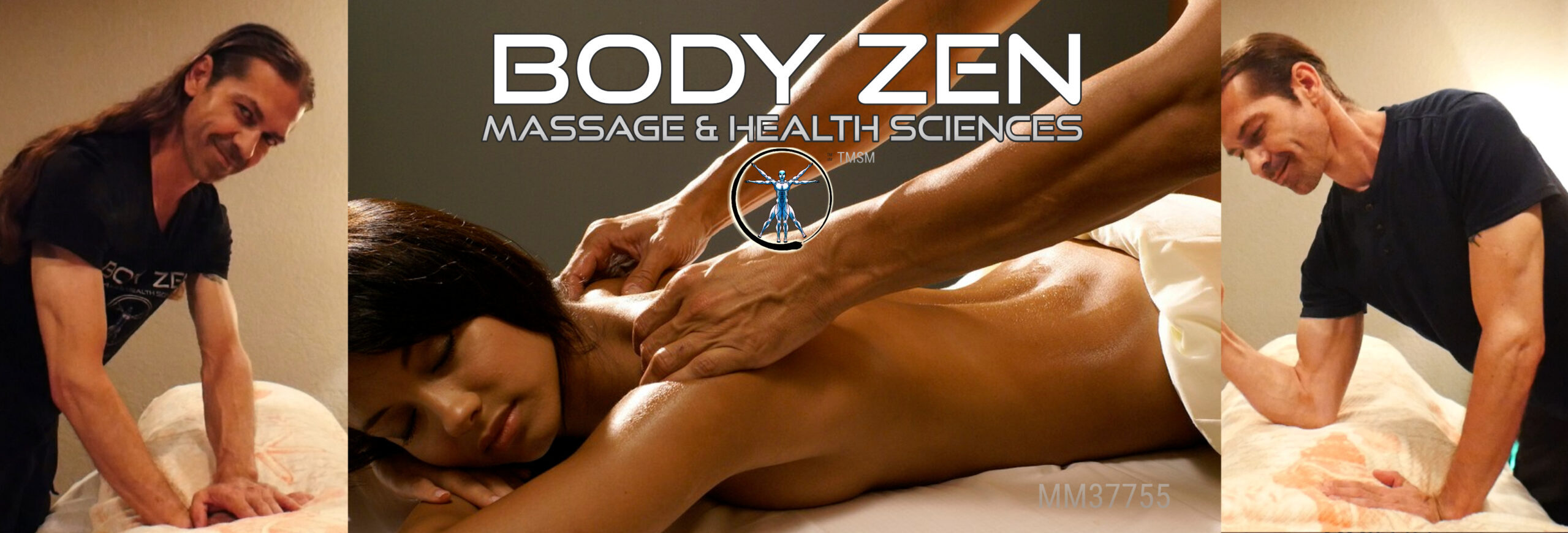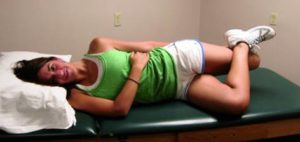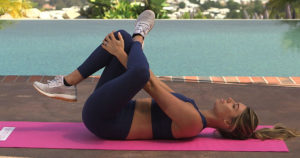This is a stretch, or series of stretches in the side lying position, that I’ve been wanting to put out for a while now. I really wanted to do the video myself to show you what I mean with all the meaningful instruction, though after two cameras and even my laptop camera not recording, recording blurred images and not working at all; I finally decided to use some images online and give you an overview like I’ve previously done.
This is a really great sequence to know and use if it works for you, because with 3 stretching motions in the safe and comfortable side lying position, we can effect the primary muscle groups, muscles and muscle/tendon that are directly related to lower back pain, hip pain and mobility, knee pain and dysfunction and even lower leg and neck and shoulder issues.
The whole sequence is done lying comfortably on the side, with the grounded leg slightly bent at the hip and knee in front of us and the top leg *held at the lower leg not the ankle or foot by our top arm, then the knee is extended behind us to stretch the hip flexors, psoas and quads, then touching toward the ground with the femur parallel to the spine to stretch the tenor fascia latae/TFL, gluteus medius and IT Band, then up toward the shoulder to stretch the gluteus maximus.
Hip Flexor, Quad and Psoas Stretch
Once in the side lying position, we form the fetal position, cup our hand like a hook or praying mantis/jujitsu hand and hold around the tibia bone/muscle of the lower leg, and then straighten our spine and hips while letting the quads, hip flexors and psoas groups relax and enjoy the stretch. To get the best stretch, keep the abdominals tense to stop the hips from extending backwards, while allowing the psoas group and quads to relax and let the femur extend backwards.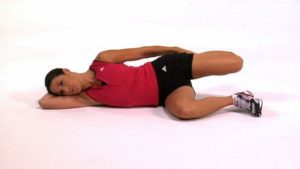
The quads are stretched when the knee is flexed and the hip flexors and psoas group are stretched when the femur is aligned with the spine and especially when the knee is extended behind us past our hips. Again, hold higher/closer to the knee on the leg and extend the whole back and middle shoulders with a relaxed neck to get a good stretch, instead of holding the foot and flexing the shoulders against the quads.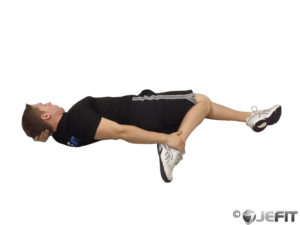
IT Band, TFL and Gluteus Medius Stretch
Just like the stretch above, we hold the lower leg, or keep it held, align the femur with the spine so the spine and femur are in a straight line, then either allow the knee to drop toward the ground or flex the adductor muscles on the inside of the leg to pull the knee for a couple seconds. If the muscles and IT band are really tight, we can use the foot of our ground leg to pull the knee down while keeping hips from rotating. And again, to get the best stretch we need to keep the hip bones from moving while we allow the hip joint to gain mobility with the stretch. So flexing the obliques by the sides of ribs as the joint and leg is relaxed is the way to go.
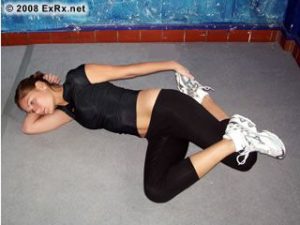
The TFL, glutes medius and the gluteus maximus (particularly a band of muscle of the g. maximus) create the predominant tension of the IT band. Tension created by the big outside quad muscle underneath the IT band, the vastus lateralis, creates most of the rest of it’s tension. So we can experiment moving the knee slightly behind the hips to hit the TFL more, or in front of the hip to hit the g. maximus more.
Glute Maximus Stretch
This stretch is very commonly done lying on the back and pulling the knee to the same or other side shoulder, by putting the ankle of the stretched leg on the knee of the other leg to pull the knee up to stretch, and by keeping the stretched leg bent big at the knee on the ground underneath us so we can lean our body-weight on the muscles to stretch (cycler stretch and pigeon pose).
However it’s very convenient while we’re already in side lying position to pull the knee up and over to get the same or very similar stretch. If the glutes are really tight we can touch the knee toward the ground slightly in front of the hips like the It band stretch. Tip: experiment with the angles of the stretch to see if you can find a particular one that really hits the muscle right where you need to.
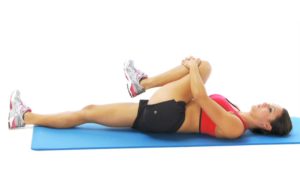
Stretching Durations
There are six types of stretches with four subsets to those, so we could spend a while going over stretches. Instead I’ll cover some simple basics that can be helpful with really tight muscles. I’ll cover general stretching and types of stretches in another entry.
Before working out, dynamic stretches where we don’t stop moving the joint or joints being stretched is better. After working out, static stretches where we do hold the stretch for a couple to many seconds is better, largely because of minimizing the risk of injury due to over stretching the muscles about to be used during the workout.
Most dynamic stretches involve taking the muscles through the same or very similar range of motion that they’ll go through during the workout, with a slower speed and broader range to give them time to adjust and room to gain mobility. However stretches for individual muscles and muscle groups can be used also, just keeping the motions smooth and fluid without stretching the muscles to far.
The static stretches that I’ve found to work the best for really tight muscles, are a type of stretch called active isolated stretching; where the stretch is held gently and only for two seconds at a time, while progressing a little further and further each time, totaling about 3-4 stretches per set. You can clearly hold the stretches for longer depending on how you feel and how tight the muscle is. The longest stretches are held for 30 seconds to 2-3 minutes depending on the desired result, though I recommend stopping at 30 seconds max unless you have a plan for stretching the muscle so much.
Conclusion & Thank you
There are other really good ways to stretch the hip flexors, psoas and glutes in the same general position like the lung position or pigeon pose, though this one done side lying is great because it’s comfortable and you don’t need to balance while you’re doing them. And by the way, a pillow or bolster for the neck while doing these is a fabulous idea.
As always, healthy function and development is the goal, so having an even balance of mobility and tension is good to keep in mind when exploring and or continuing to use these or any stretching exercises. So getting comfortable with calisthenics squats is a great way give your body a test run before and or after your stretches depending on how long you use your stretches (another ‘blog topic for sure!). And always consult your doctor or physician before beginning or altering your diet or workout regimen
Thank you so much for taking the time to read this. I wanted to have a simple and informative video though I hope that this was also enjoyable, to the point and very helpful to you. Thank you for being my client and I hope to see you again soon!
Yours in keeping great health,
